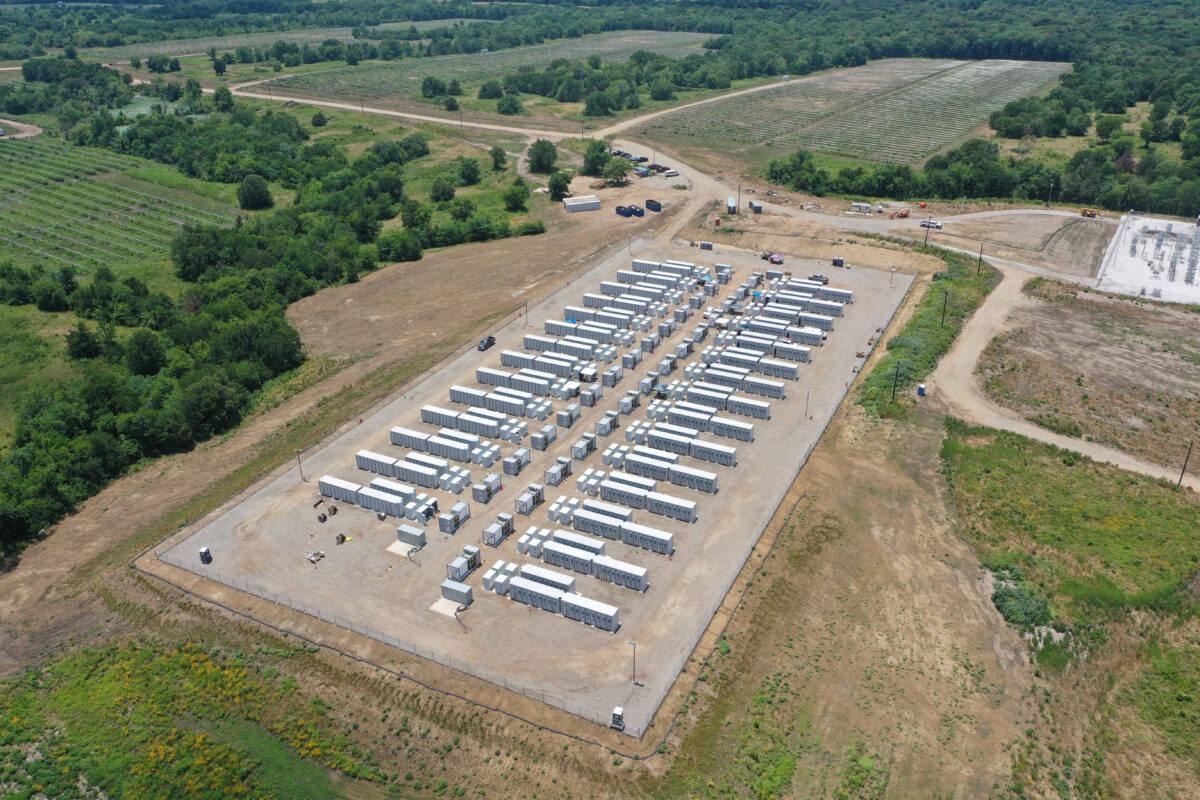 Future LGES Vertech facility site in Texas (Photo: Business Wire)
Future LGES Vertech facility site in Texas (Photo: Business Wire)LG Energy Solution Vertech announced it has lined up 10 GWh of grid-scale battery energy storage (ESS) projects in the U.S. in the new year.
These 10GWh are comprised of 10 integrated battery energy storage systems, but the company did not specify details about where the projects would be located, nor did Vertech specify individual storage site sizes or durations.
All projects will incorporate lithium-ion batteries manufactured by LG Energy Solution with hardware integration, system controls software, and related services provided by LG Energy Solution Vertech. The AEROS software suite will be deployed to all sites to provide end-users with onsite supervisory and control services and cloud-based access to site performance analytics.
“Being selected by experienced U.S. project developers supports our vertically integrated approach to the market,” Jaehong Park, CEO and President of LG Energy Solution Vertech said. “The awards coincide with the passage of the IRA, legislation that further strengthens our view that the US energy storage industry is set for sustained growth especially as large-scale battery manufacturing plants come online within the next 2-3 years.”
The company has also announced plans to construct a battery manufacturing complex in Queen Creek, Arizona. The complex will consist of two manufacturing facilities – one for cylindrical batteries for electric vehicles and another for lithium iron phosphate pouch-type batteries for energy storage systems (ESS). The ESS facility will provide 16GWhs of energy storage batteries.
In 2022, LG Energy Solution acquired NEC Energy Solutions (NECES), an ESS integrator based in the United States. LG Energy Solution then established LG Energy Solution Vertech to integrate complete energy storage systems including software, services, and hardware manufactured by the parent company.
These 10GWhs secured since the acquisition account for more than five times the total energy storage projects completed by its predecessor NEC Energy Solutions during its tenure, LG Energy Solution Vertech said.
Per the Q4 2023 US Energy Storage Monitor, a quarterly publication from Wood Mackenzie Power & Renewables and the American Clean Power Association (ACP), the 2024 grid-scale ESS market is expected to reach 30GWh total, with a 35% increase over 2023.
Battery storage is booming in the U.S., and for good reason. So much intermittent renewable energy on the grid demands flexible resources to fill gaps. Investors have poured billions of dollars into battery storage development to cash in; largely based on speculative opportunities. But there’s a problem: markets have been slow to evolve, leading to an uptick in consolidation and growing uncertainty about the path ahead.
The U.S. Department of Energy (DOE) recently submitted a proposal that if approved would help speed up certain transmission, solar, and storage projects built on federal land, while clogged interconnection queues are causing headaches in the industry.
The proposed changes would affect how the DOE complies with the National Environmental Policy Act (NEPA), adding a “categorical exclusion” for certain energy storage systems and revising categorical exclusions for upgrading and rebuilding transmission lines and for solar photovoltaic systems. These exclusions would remove the requirement for environmental assessments or environmental impact statements for specific types of projects.
Additionally, the U.S. Department of Treasury recently issued new guidance on the Section 45X advanced manufacturing production tax credit that passed as part of last year’s Inflation Reduction Act (IRA).
The Treasury proposed regulations to implement the credit, intending to incentivize the production of eligible components within the United States. Qualifying materials include solar and wind energy components, inverters, some battery parts, and applicable critical minerals.
The proposed regulations would affect eligible taxpayers who produce and sell such components and intend to claim the benefit of an advanced manufacturing production credit- including by making elective payments or credit transfer elections.